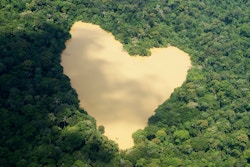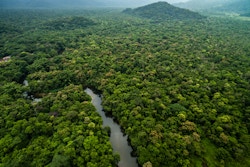The Amazon rainforest: The world’s most important ecosystem
The Amazon Rainforest, the largest in the world, is a lifeline for our planet, regulating climate and sustaining life. But it is vanishing fast.

VAST: The Amazon Rainforest: Photo: Shutterstock

The Amazon Rainforest is one of the last truly wild places on Earth –
vast, ancient, and still largely unknown. It is not just a forest, but a lifeline for our planet, regulating climate, sustaining life, and
holding secrets we have barely begun to understand. But it is vanishing
fast – cleared, burned, consumed.
Can we stop the destruction before it is too late?
Photo: Araquem Alcantara

A massive kapok tree, in the amazing Amazon. Home to around 30 million people.
Photo: Araquem Alcantara

Over 1.6 million of them are Indigenous.
They belong to more than 400 different Indigenous groups.
Some are isolated peoples who choose to avoid contact with the outside world.
Photo: FUNAI
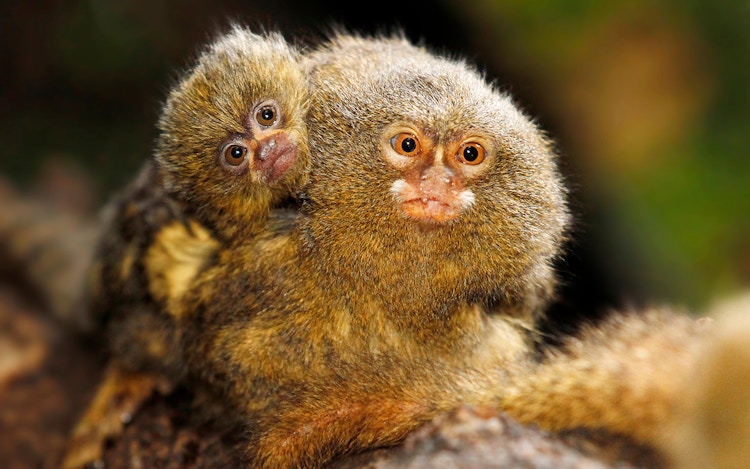
A biological treasure trove.
Many plant and animal species are endemic. Like these pygmy marmosets.
Photo: Shutterstock

A cure for diseases.
70 % of cancer medicines with active ingredients derived from plants come from plants that are found only in the rainforest.
Photo: Kyrre Lien

A key to solving the nature and climate crises.
For our common future across the globe.
Photo: Thomas Marent

58% of all remaining tropical rainforest is found in the Amazon in South America. The Amazon covers an area of 5.3 million square kilometres, of which 3.8 million square kilometres is intact rainforest.
It is by far the largest rainforest in the world, covering nine countries and an area more than half the size of the USA.
We work in Brazil, Peru and Colombia.
For more than 65 million years, The Amazon has stood tall and resilient.
Since the beginning of the Industrial Revolution, in the space of less than 200 years, 41% of the vast Amazon has been lost or damaged.
State of the Amazon Rainforest
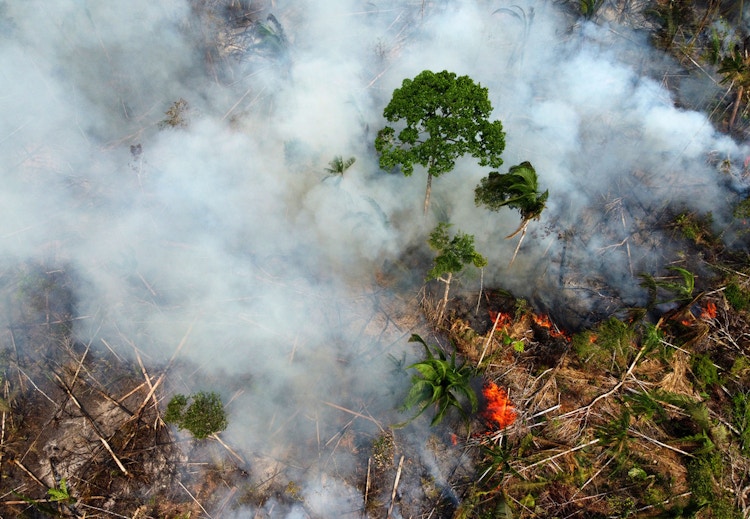
VULNERABLE: Fire in the Brazilian Amazon in 2023. A drier rainforest is more vulnerable to both man-made and natural fires. Photo: Edmar Barros
In 2024 alone, 17.000 km2 of the Amazon rainforest disappeared, and in the same year, scientists warned that we are reaching a tipping point.
The compounding stress from land clearance and unprecedented levels of drought, heat and fires, can ruin the Amazon’s ability to regenerate.
Up to half of the Amazon could hit the tipping point by 2050, according to a study published in Nature. Large tracts of forest have already reached a critical boundary and are in need of restoration.
Threats to the Amazon - an economy of destruction
The Amazon is being choked by an economy that is devouring its resources:
- Cattle ranching
- Industrial agriculture
- Oil and gas production
- Mining and logging
- Infrastructure such as dams and roads



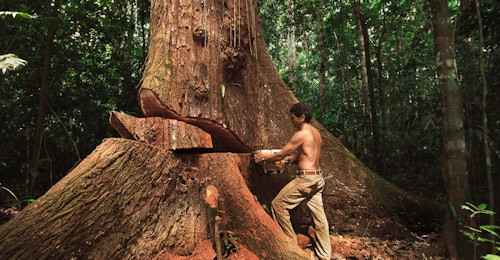




DRIVERS OF DEFORESTATION: Cattle ranching, soy plantations, logging (much of it illegal), oil and gold extraction, roads and dams decimate and pollute the Amazon rainforest. Photos: Araquem Alcantara, Victor Moriyama Shutterstock, Edmar Barros, Stefan Kistler Bruno Kelly and Ronny Hansen.
Size matters
Human activity does not just make the rainforests shrink. Infrastructure and roads, logging, mining and agriculture fragment them into isolated patches.
That is a threat in itself.
The size of the rainforest is directly related to its ability to maintain ecological balance, support biodiversity and provide life-sustaining ecosystem services.
If we lose the last contiguous rainforests, we loose the fight against climate change and biodiversity loss.

That is why Rainforest Foundation Norway focuses on the three largest, contiguous rainforests left on the planet – in South America, Central Africa and Southeast Asia & Oceania.
The Amazon is by far the biggest of the three.
Photo: Shutterstock
Threats to the Amazon: Unprecedented floods, droughts and fires
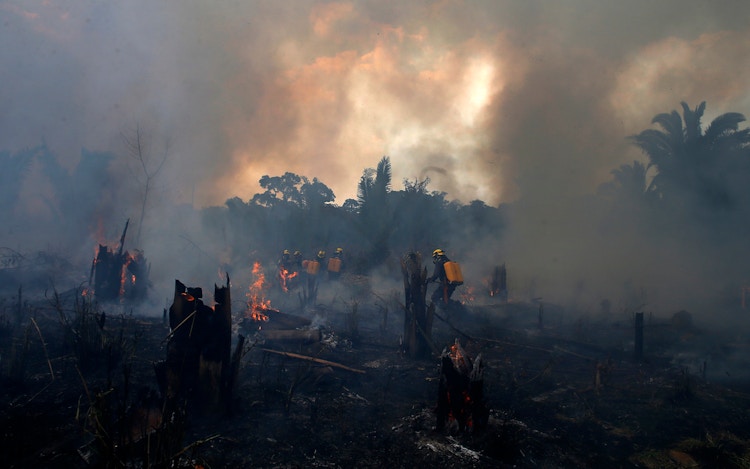
Fact!
Large, healthy rainforests do not burn.
Photo: Edmar Barros

The Amazon is becoming increasingly drier and hotter due to decades of forest destruction and global warming.
Combined with the drying effect of the natural weather phenomenon El Niño, this once nearly fireproof rainforest is now highly flammable.
Ana Amélia Hamdan /ISA
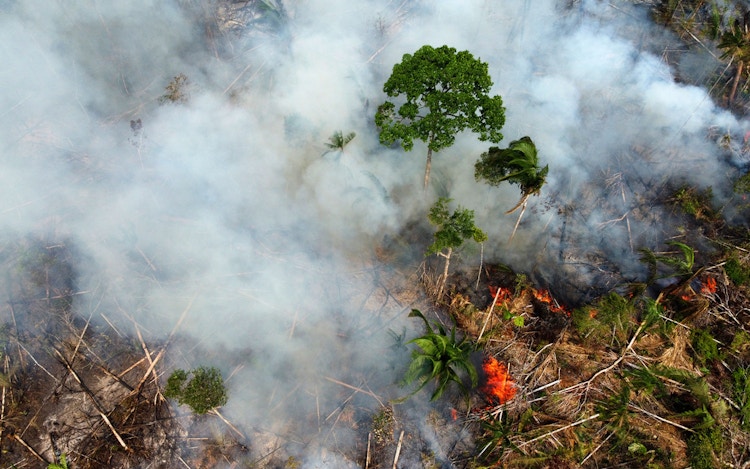
The trend is clear: There is a steady increase in rainforest loss to fires throughout the 2002–2024 period, with spikes in 2016 and 2024.
Fires were responsible for 18% of tree cover loss in Brazil between 2001 and 2024, according to Global Forest Watch.
Photo: Edmar Barros
How we work in the Amazon
We work along four pathways in Peru, Colombia and Brazil to preserve and protect the Amazon and to shift the structures that threaten forests and people:
- Working with Indigenous peoples to secure their land rights
- Creating political change
- Making businesses sustainable
- Working with local communities to develop a sustainable forest economy
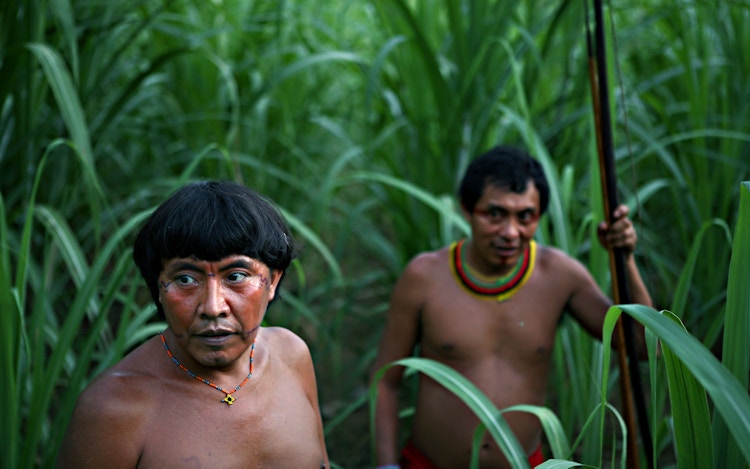
Two men from the Indigenous Yanomami people patrol their territory in the Brazilian Amazon.
They are on the lookout for illegal logging and gold mining.
Photo: Thomas Nilsen
Rights-based protection
Recognition of Indigenous peoples’ rights to their traditional lands is proven to be extremely effective in protecting the rainforest.
Rainforest Foundation Norway is one of the world’s leading organizations in the field of rights-based rainforest protection.
In a region marred by political instability, weak democracies and corruption, Rainforest Foundation Norway works to strengthen civil society.

Everything we do, we do with local civil society partners across the Amazon.
Photo: RFN
Two examples of current rights-based projects in the Amazon:

Photo: Rogerio Assis/ISA
From guardians to green entrepreneurs
Through empowered Indigenous leadership, the Amazon can be both prosperous and protected.
We support local communities and organizations in the Brazilian Amazon in building a new sustainable economic model for protected areas and Indigenous territories – through the ForEco program.

Photo: Johan Wildhagen
The right not to be contacted
We have been instrumental in establishing five isolated peoples' territories in the border region between Brazil and Peru.
Now, we are working to connect these five territories into one large, contiguous protected area. Protecting the right of isolated peoples not to be contacted is crucial to the protection of the rainforest.
Rainforest Foundation Norway has the size, credibility and long-standing network of local partners needed to deliver tangible results.


